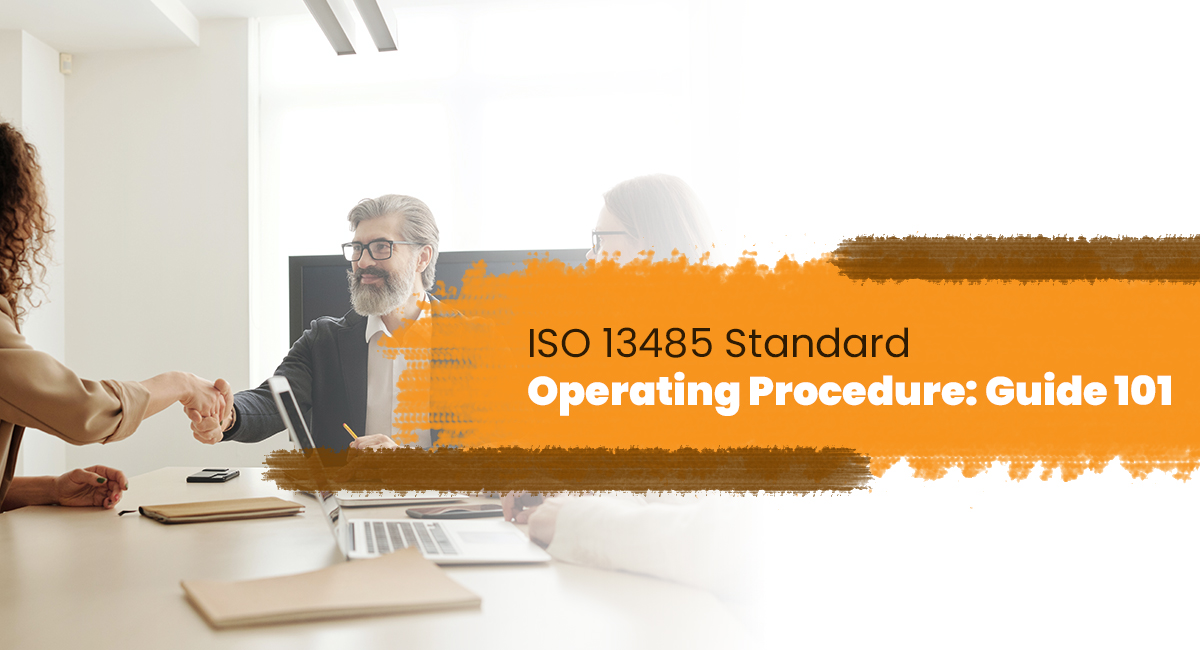ISO 13485 Standard Operating Procedure: Guide 101
Why is the ISO 13485 a necessary standard to follow for an operating business in the medical device manufacturing and supply industry? If you run an online search, you will find countless answers, referring to the fact that the ISO 13485 is included inside any quality management standard group, crafted specifically for the medical device sector. However, the answer is wide and more complicated. The standard fundamentally provides a set of guidelines for operating systems. From design to delivery of quality medical devices, a company needs a properly streamlined process that aligns to all company objectives and internationally established quality standards.
The ISO 13485 standard operating procedure is comprised of a set of activities, which help a company’s management team strictly follow the rules for quality assurance. The ISO 13485 is an international standard that specifies requirements for a quality management system (QMS) for medical devices. Developing Standard Operating Procedures (SOPs) is a critical component of implementing and maintaining the ISO 13485 compliant QMS.
The ISO standard is mandatory as the market competition is high and there is space and prospect for entrepreneurs and small companies. With the help of the accreditation, a company can exhibit its dedication and commitment to the target audience. Besides, a stable profit margin and opportunity for market exposure, it is necessary to maintaining this certification. A constant supply of quality products allows your brand to stand against of its competitors. Your consumers would stop shifting to other brands when your medical devices exceed their satisfaction curve. For that, a stringent plan is to be implemented. The following is the basic model that you can apply in your company.
Setting the purpose
• Stating the objectives and goal of getting the ISO 13485 standard
• Explaining all the critical requirements of the ISO 13485 standard
Determining the scope of the certification
• Determining the scope of the program for quality management
• Identifying the procedures for timely implementation and covering the standard operating procedure (SOP)
Setting the definitions
• Removing all doubt related to terminologies and definitions relevant to the standard procedures
• Ensuring that there is consistency in terminology
Management accountabilities
• Establishing a leadership team
• The team explains the individual roles and responsibilities of stakeholder teams
• Identifying the right teams for individual work and schedules
Procedure
1.Introduction:
• Provide an overview of the procedure
• Explain its importance within the QMS
2.Process Steps:
• Detail step-by-step procedures
• Include specific actions, controls, and interactions
• Ensure compliance to all ISO 13485 requirements
3.Documentation:
• Specify the documents associated with the procedure
• Address document control and versioning
4.Record Keeping:
• Describe record-keeping requirements
• Specify the type of records to be maintained
5.Training and Competence
• Address training requirements for personnel involved
• Specify competency criteria
6.Monitoring and Measurement:
• Explain how the process is monitored
• Identify key performance indicators
• Describe measurement methods
7.Nonconformance and Corrective Action:
• Detail the process for handling nonconformities
• Specify corrective action procedures
8.Continuous Improvement:
• Address how the process contributes to continuous improvement
• Include mechanisms for feedback and lessons learned
Revision – Checking whether any documents have been changed according to the strategies or not. The management team must check the revision history, note dates, descriptions of the individual changes, and version numbers.
Approval and distribution – Getting approval from the concerned authorities for the procedures. The management must provide access to the personnel who need to check the verification dates and description for changes.
Review and updates – The management must review the actions taken for modification and update the document entries from time to time. They also need to specify the frequency as well as the requirements for management and stakeholder reviews.
To find the best professional support for attaining the requirements of the ISO business management system standards and the internal audit, contact us at Compliancehelp Consulting LLC. We are a premier site for achieving any ISO certification in the US. Our bespoke solutions for ISO and other global certifications are ready to make the seemingly exhausting process of accreditation, comfortable and time bound. From basic consultation to audit and analysis, we will cover everything. Get help to clear your concepts regarding the clauses of any management system standard you require.

